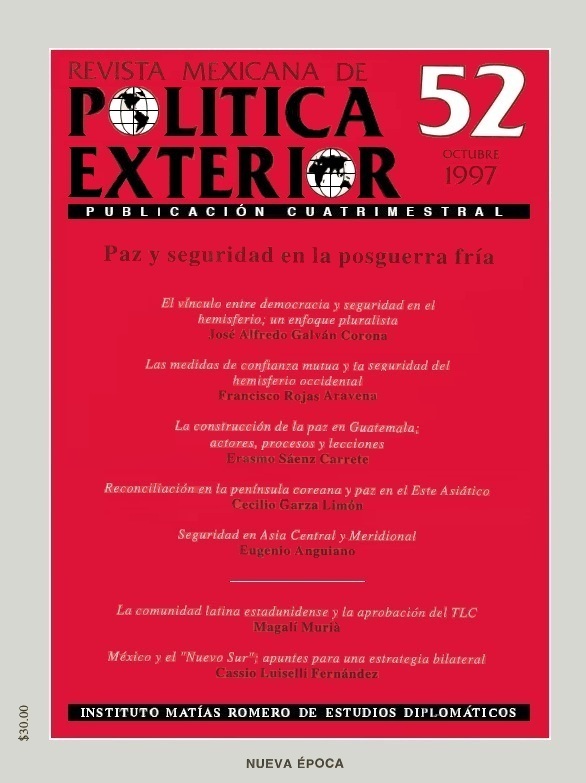Security in Central and Southern Asia
Main Article Content
Abstract
With the end of the Cold War, new opportunities for peace and political stability in the world have appeared. However, the important geopolitical readjustments of the post-Cold War era have given rise to new conflicts between nations, to power vacuums that are being filled through realignments between groups of countries, and in general, new pressures on regional and global stability. This essay analyzes the case of central and southern Asia, where some trends seem to point toward the appearance of political-geographic conflicts of a different nature that, although they have not turned into border or wide-reaching wars, constitute new international frictions. The author analyzes the system of checks and balances between emerging countries and middle powers that prevails in the region, the reaccommodations and the appearance of informal alliances, as well as the challenges they entail for the future of that zone’s security. In particular, the essay highlights the constant influence in the region by the global power—the United States—, that of the regional power that is in the process of becoming a global power—China—, and that of the former world power that is seeking to re-establish its sphere of influence—Russia.

